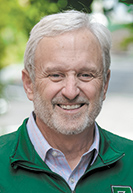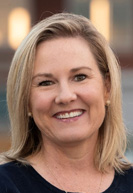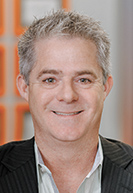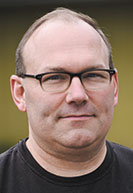Subscriber Benefit
As a subscriber you can listen to articles at work, in the car, or while you work out. Subscribe Now
John Stehr has some explaining to do. As a 30-year Zionsville resident, he knows many residents are skeptical about any talk of changes to the town.
That’s why the first-term mayor is planning a public outreach tour throughout Zionsville to pitch his plan for a 160-acre, $250 million development south of the town’s quaint, historic downtown, which is home to 600 houses and more than a dozen local businesses.
“If it’s not going to be a community effort, I don’t think, ultimately, it’s going to be successful,” Stehr said. “I think we all need to reach some level of agreement on how to proceed.”
The project called South Village could include about 250 residential units in the form of single-family houses, condos and multifamily buildings; 500,000 square feet of office space, retail, dining and public plazas; parks and nature trails; and two parking garages. The development would be built in stages over about five years if the proposal receives approval from the Zionsville Town Council.
Stehr retired in 2018 after a 42-year career in television news, which included 23 years as a news anchor at WTHR-TV Channel 13. He said he recognizes the need to be precise in his communication given the scope of the South Village plan and scars that remain for some residents following previous attempts to develop that area.
Stehr, Deputy Mayor Kate Swanson and other town staff will hold about two dozen “South Village chats” over the next two months to talk with residents about the project. Stehr said the focus will be on both what the town plans to do and what it won’t do.
According to Stehr, the project would help bring more visitors to the Village Business District—the historic downtown area—and create public spaces for people to gather. It would be built in stages and would not touch the town’s brick Main Street or Lincoln Park, the site of a former train depot where President Abraham Lincoln stopped to speak to Zionsville residents in 1861 on the way to his inauguration.
“I think what we have with our brick Main Street is special,” Stehr said, adding that other communities have had to build what Zionsville already has.
He also said South Village would add businesses to help balance the town’s property tax base, which is heavily tilted toward owner-occupied homes.
A state constitutional amendment that voters approved in 2010 caps property tax bills at 1% of assessed value for owner-occupied homes. Property taxes on commercial development are generally capped at 3% of assessed value.
“It’s about what the town is going to be in 20 or 25 years,” Stehr said. “We want to have a town that’s vibrant, and standing still is not going to get us there. Think of a shark in the water. If the shark’s not moving, the shark’s dying. And I think that’s true of towns, too.”
Christopher Day, a Zionsville resident and CEO of Indianapolis-based venture capital firm Elevate Ventures Inc., said the South Village plan would help ensure the long-term success of Zionsville’s local business community.
“It’s a unique bridge between the corporate citizens in Zionsville and the local business shops in Zionsville,” Day said. “It’s really intentionally engaging those corporate citizens along with the shop owners along Main Street to create that proper transition between the two.”

What’s the plan?
Last week, Stehr unveiled the South Village master plan. The project would be developed on both sides of Zionsville Road, which becomes South Main Street north of West 106th Street.
South Village’s borders would roughly be West Cedar Street to the north, Creekside Corporate Park to the east, Old 106th Street to the south and Eagle Creek to the west.
Zionsville Plan Commission members will begin reviewing the South Village Planned Unit Development at an April 15 meeting. The project will move to the Zionsville Town Council once the Plan Commission makes a recommendation.
The planned unit development would guide future development in South Village. The South Village PUD would supersede all existing PUDs in the area, including the Creekside Corporate Park PUD.
The 91-acre Creekside Corporate Park at West 106th Street and Creek Way is home to the headquarters of the Rahal Letterman Lanigan Racing team, insurance holding company Group 1001 and pharmaceutical marketer and consultant DK Pierce & Associates. NTT IndyCar Series driver Graham Rahal is building facilities for his Graham Rahal Performance and Rahal Ducati Indianapolis ventures at Creekside.
Stehr said including Creekside in the South Village PUD would give new life to the nature-based corporate park that is on land the town and local school system purchased 11 years ago from Michigan-based Dow Chemical.
“Let’s be honest; it hasn’t really reached the potential that we hoped it would reach at that time,” he said. “The PUD there has been changed at least three times, maybe four times. So, this is one opportunity to sweep this all together.”
The new PUD would set standards for architecture, setbacks and building heights, which would range from 2-1/2 stories near the Village Business District to five stories south of West 106th Street.
Swanson said creating one PUD to encompass the entire project would guide developers and landowners and give them knowledge in advance about what types of development will and won’t be permitted.
“It gives them the certainty going into this that they know exactly what they can do in the area,” Swanson said. “In the past, that was one of the problems with these projects getting denied.”
If South Village receives approval from the Town Council, the town’s first step would be to realign roadways to alleviate traffic backups near the development.
A section of South Main Street would be removed south of Sycamore Street, while South First Street would be extended south.
A dog-bone-style roundabout would connect South Main Street and South First Street. Another roundabout would be built to the north, at Sycamore Street and South First Street.
Stehr said dealing with the traffic situation is an important first step in making the entire project happen. Land between South Main Street and South First Street would be available for development after the roadways were realigned.
He said the area could include a public plaza like Valparaiso’s 2-1/2-acre Central Park Plaza, which features an ice rink and pavilion. The town owns the block northwest of Sycamore and Main streets that housed a former PNC Bank and a Zionsville Lock & Safe store before the town demolished the two buildings in 2020.
The public plaza would be the last piece of the South Village project to be developed because Stehr said it would be important to first have people living and working in the district.
“If we put that in now before there are people there to use it, it’s going to be a failure and always be seen as a failure,” Stehr said. “We have to put that one in last when we have the other infrastructure and the other people around to support it, and then we can program it, too.”
Private landowners and developers own the remainder of the South Village area. Stehr said the town has all landowners on board with the South Village PUD plan, and the town does not plan to purchase any additional land.
Will it work?
The town began looking at ways to develop the South Village area more than 30 years ago; four proposals over the past decade did not come to fruition.
◗ In 2013, Indianapolis-based Buckingham Cos. began working to acquire 20 acres just south of Eagle Creek for a mixed-use project.
◗ In 2016, locally based 200 West Partners LLC proposed a three-story retail and office building, a restaurant, single-family housing and a four-story multifamily building with 50 units.
◗ In 2019, Carmel-based J.C. Hart Co. Inc. attempted to rezone four acres on the southwest corner of Sycamore and Second streets—a property that formerly housed the Calico Corners store—to build Sycamore Flats, a 184-unit apartment complex with retail space and a parking garage. Neighbors opposed the $40 million project, citing its density and potential for traffic problems. Thousands signed a petition opposing the development before the Town Council voted it down.
◗ And, most recently, former Mayor Emily Styron in 2020 introduced a study area for the so-called community gateway project south of downtown that would have spanned 11 acres.
Natalie Kruger, co-owner of Taylor Oil Co. Inc. at 10702 Zionsville Road, said the South Village plan has a better chance of success because area property owners are privy to the plans, unlike in the past.
“The previous plans just took a lot of liberties and showed drawings of all the homes being destroyed, replaced with commercial and retail, and it was insulting and very presumptuous and fueled a lot of remonstrations,” Kruger said.
Taylor Oil, founded in 1948 by Kruger’s grandfather Lloyd L. Taylor specializes in home heating oil. Kruger’s family owns 52 acres in total and operates the family business on 10 acres.
Kruger said her family will formulate a development plan that will involve the town if the South Village PUD is approved. They will develop it as private landowners with the town’s approval and will continue operating Taylor Oil. Any development will be on a commercial lease that the family will own, she said.
“I’m sure there will be [individualization] with each development that goes in on each part of the PUD,” she said. “But I think it is nice to have that cohesive PUD to keep the historic feel for the entire village.”
Bret Brewer, president of the Zionsville Village Residents Association, said his biggest questions about the South Village will be about density, housing and traffic, but he thinks the plan is “better than anything that has been proposed in the past.”
“We’ve gotta look at it with skepticism and critique things,” Brewer said. “And the bigger brains that are on our committee, I’ll let them tell me what they see and what their recommendations are, but from my point of view, from what I’ve seen so far, it looks good to me.”•
Please enable JavaScript to view this content.





